Workplace
Building a Strong Safety Culture in Australia: A Guide for Organisations
Exploring how safety culture Australia shapes healthier, more resilient, and compliant workplaces across every industry.
Safety is more than just compliance with regulations or ticking boxes on checklists. It is a mindset, a shared commitment, and a way of working that places health and wellbeing at the forefront of every activity. Across industries such as construction, healthcare, mining, logistics, manufacturing, and aged care, fostering a strong safety culture is a vital factor that directly impacts productivity, reputation, and legal compliance.
In this article, we will explore what safety culture means, why it matters, how it can be improved in the Australian context, and what leaders can do to embed safety into the DNA of their organisations. By the end, you will understand the importance of building an enduring safety mindset that aligns with values, behaviours, and national workplace health and safety (WHS) frameworks.
What is Safety Culture?
The term “safety culture” refers to the collective values, attitudes, beliefs, and behaviours that shape how people within an organisation approach safety. It is the difference between workers following safety rules because they have to, and workers embracing safe practices because they genuinely value their wellbeing and that of their colleagues.
A strong culture means that everyone from executives to frontline workers understands risks, takes ownership of safe behaviours, and actively participates in hazard identification and risk management. On the other hand, a weak culture may lead to complacency, underreporting of incidents, and unsafe practices becoming normalised.
Why Safety Culture Matters in Australia
Australia has a robust system of workplace health and safety laws, enforced by state and territory regulators such as WorkSafe Victoria, SafeWork NSW, and Workplace Health and Safety Queensland. These frameworks set minimum compliance requirements, but a strong safety culture goes beyond compliance to drive proactive improvements.
Key reasons why safety culture is critical in the Australian context include:
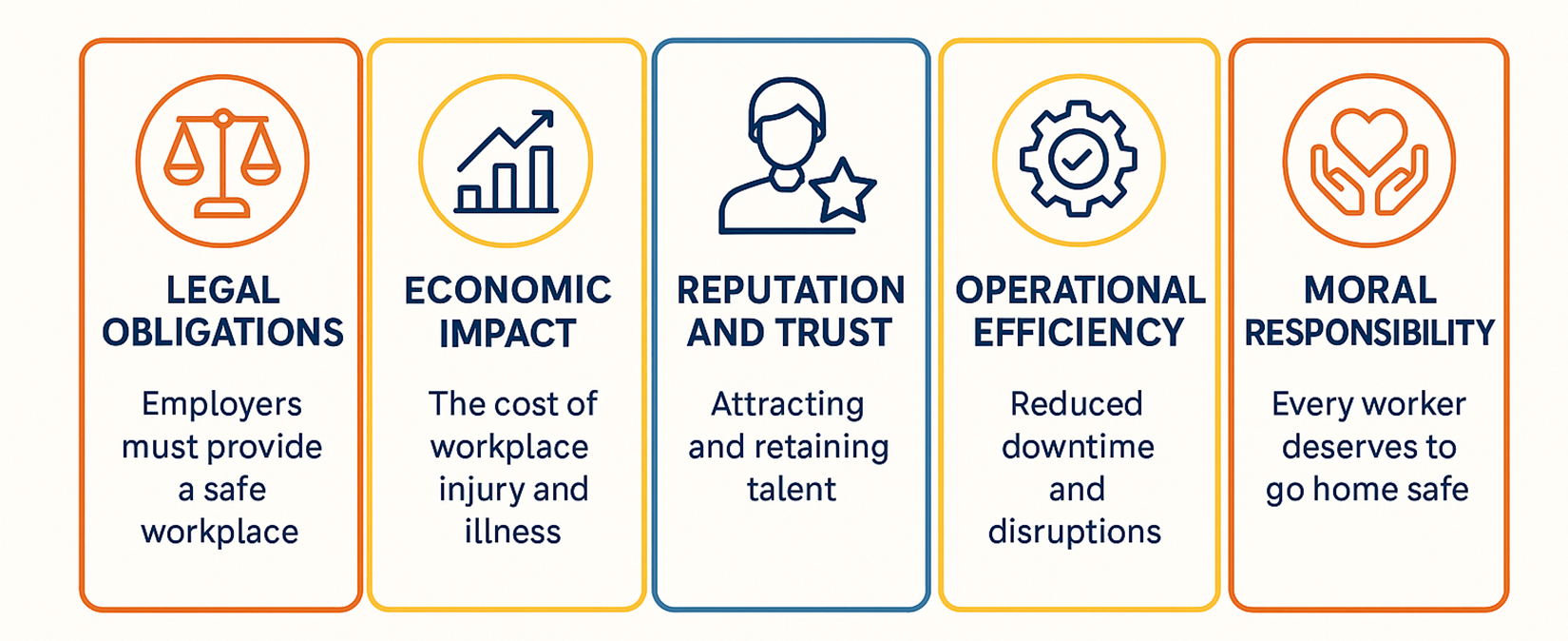
- Legal obligations: Employers must provide a safe workplace under the Work Health and Safety Act 2011 (Cth) and equivalent state-based legislation.
- Economic impact: According to Safe Work Australia, the cost of workplace injury and illness is estimated in the billions each year.
- Reputation and trust: Organisations known for safety attract and retain talent, as well as build trust with clients and stakeholders.
- Operational efficiency: A safe environment reduces downtime, disruptions, and compensation claims, leading to higher productivity.
- Moral responsibility: Every worker deserves to go home safe and healthy at the end of each day.
For businesses striving to stand out, embedding a strong safety mindset is not just a regulatory necessity but a competitive advantage. This is particularly relevant when building and maintaining a strong safety culture Australia wide.
The Pillars of a Strong Safety Culture
Developing an effective culture is not accidental. It requires deliberate strategies built around clear principles. The following pillars are widely recognised as the foundation of success:

1. Leadership Commitment
Leaders set the tone. When executives and managers consistently demonstrate safe behaviours, allocate resources to WHS initiatives, and prioritise wellbeing, workers take notice. Visible commitment builds trust and sets clear expectations.
2. Worker Engagement
Frontline workers are often the first to identify hazards, so their involvement is essential. Engaging staff through consultation, committees, and open communication channels ensures safety systems are practical and effective.
3. Training and Education
Ongoing training reinforces safe behaviours and equips workers with the skills to manage risks. Programs should be tailored to industry, job role, and specific hazards.
4. Reporting and Transparency
A culture that encourages reporting near-misses and unsafe conditions without fear of blame is a culture that learns and improves. Transparency builds accountability.
5. Continuous Improvement
Safety culture is not static. Organisations must regularly review policies, procedures, and performance, adapting to new challenges, technologies, and regulations.
6. Recognition and Reward
Positive reinforcement motivates employees to uphold safety standards. Recognising teams and individuals for safe behaviours helps reinforce the message.
Practical Steps to Strengthen Safety Culture
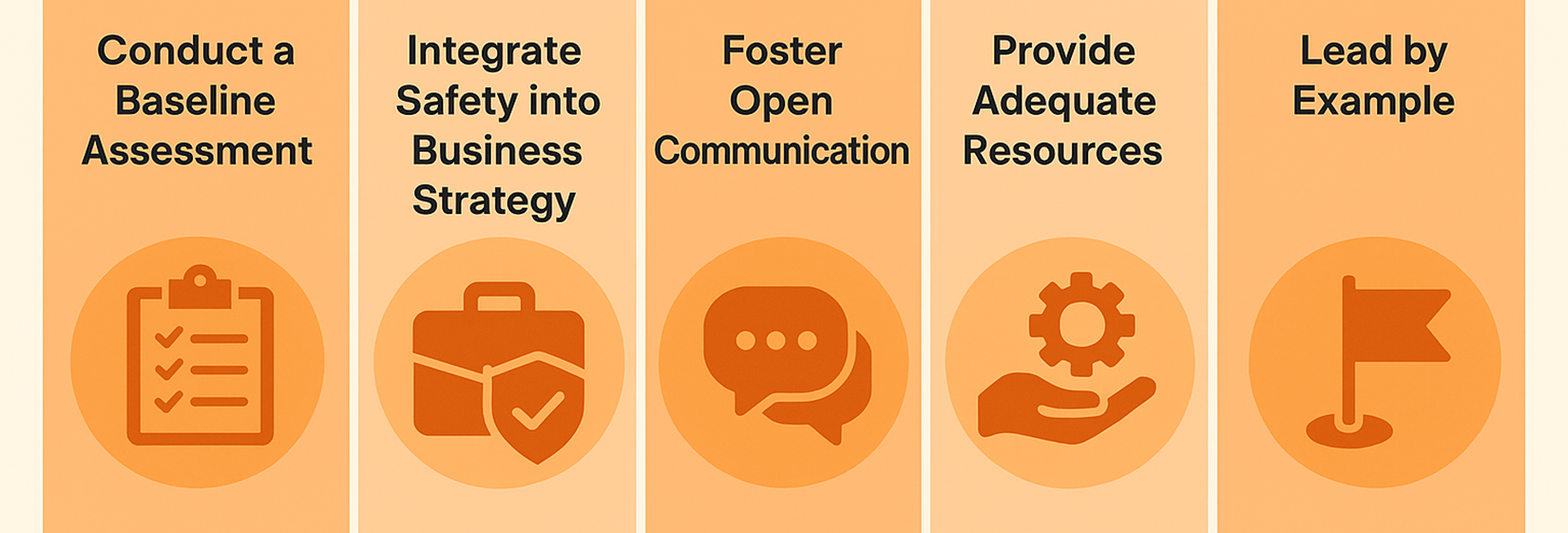
Conduct a Baseline Assessment
Before improving culture, organisations must understand where they currently stand. Surveys, audits, and focus groups can reveal strengths and gaps.
Integrate Safety into Business Strategy
Safety should not be an afterthought. It must be embedded into organisational planning, decision-making, and performance indicators.
Foster Open Communication
Encourage workers to raise concerns, suggest improvements, and share experiences. Effective communication reduces misunderstandings and builds trust.
Provide Adequate Resources
Safety requires investment in equipment, training, and systems. Cutting corners compromises culture and increases risks.
Lead by Example
Supervisors and managers must model safe behaviours consistently. Workers are less likely to follow rules if leaders ignore them.
Industry-Specific Challenges in Australia
Construction
The construction industry has one of the highest rates of serious injuries. High-risk activities such as working at heights, operating heavy machinery, and handling hazardous materials make a strong safety culture essential.
Mining and Resources
Remote locations, hazardous substances, and heavy vehicles make mining particularly challenging. The industry has developed strong cultural programs, but ongoing vigilance is necessary.
Healthcare and Aged Care
Manual handling, infection control, and psychosocial hazards are significant. Safety culture must balance patient care with worker wellbeing.
Logistics and Transport
Vehicle movements, fatigue, and loading practices require clear systems and cultural reinforcement.
Office Environments
Though often seen as low-risk, offices present ergonomic and psychosocial risks that must be managed through a strong cultural lens.
Measuring Safety Culture
Safety culture can be intangible, but it can still be measured. Some methods include:

- Employee surveys assessing perceptions of management commitment and communication.
- Incident and near-miss reporting trends that highlight proactive behaviour.
- Audit results comparing policies against actual practices.
- Behavioural observations identifying safe and unsafe habits.
Benchmarking against industry best practice provides a roadmap for improvement.
Technology’s Role in Enhancing Safety Culture
Digital tools are playing an increasing role in transforming safety culture. Some innovations include:

- Mobile apps for reporting hazards, incidents, and inspections in real time.
- Data analytics to predict risks and trends.
- Virtual reality training for high-risk activities.
- Digital dashboards providing transparency to workers and leaders.
Technology supports a proactive, engaged, and transparent culture by making safety accessible and visible to all.
The Role of Leadership in Driving Cultural Change
Leaders hold the power to make or break cultural transformation. Effective leaders:
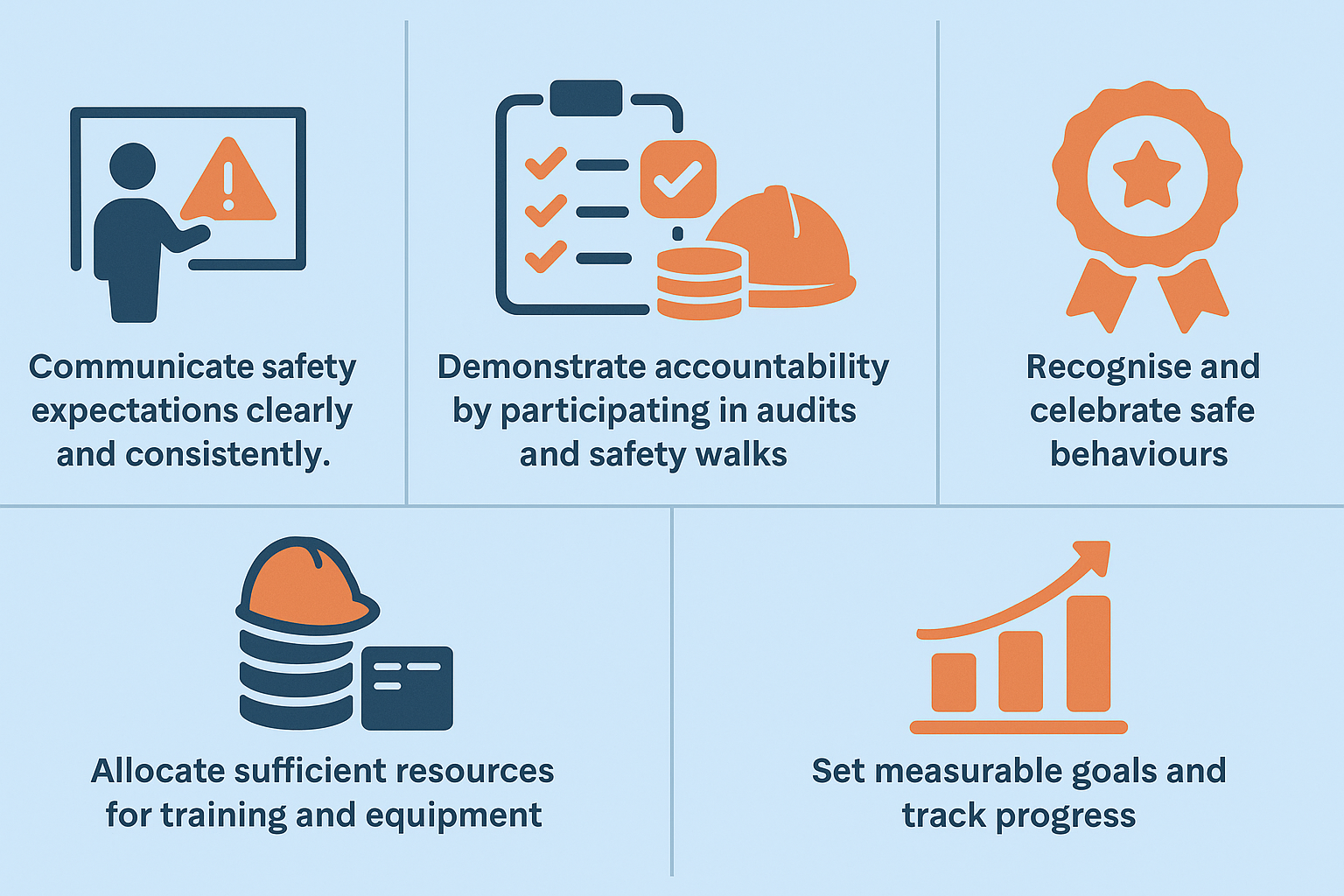
In many Australian organisations, the ability to demonstrate a resilient and visible safety culture Australia wide is directly tied to leadership behaviours.
Challenges to Building a Strong Culture
While the benefits are clear, organisations often face barriers such as:
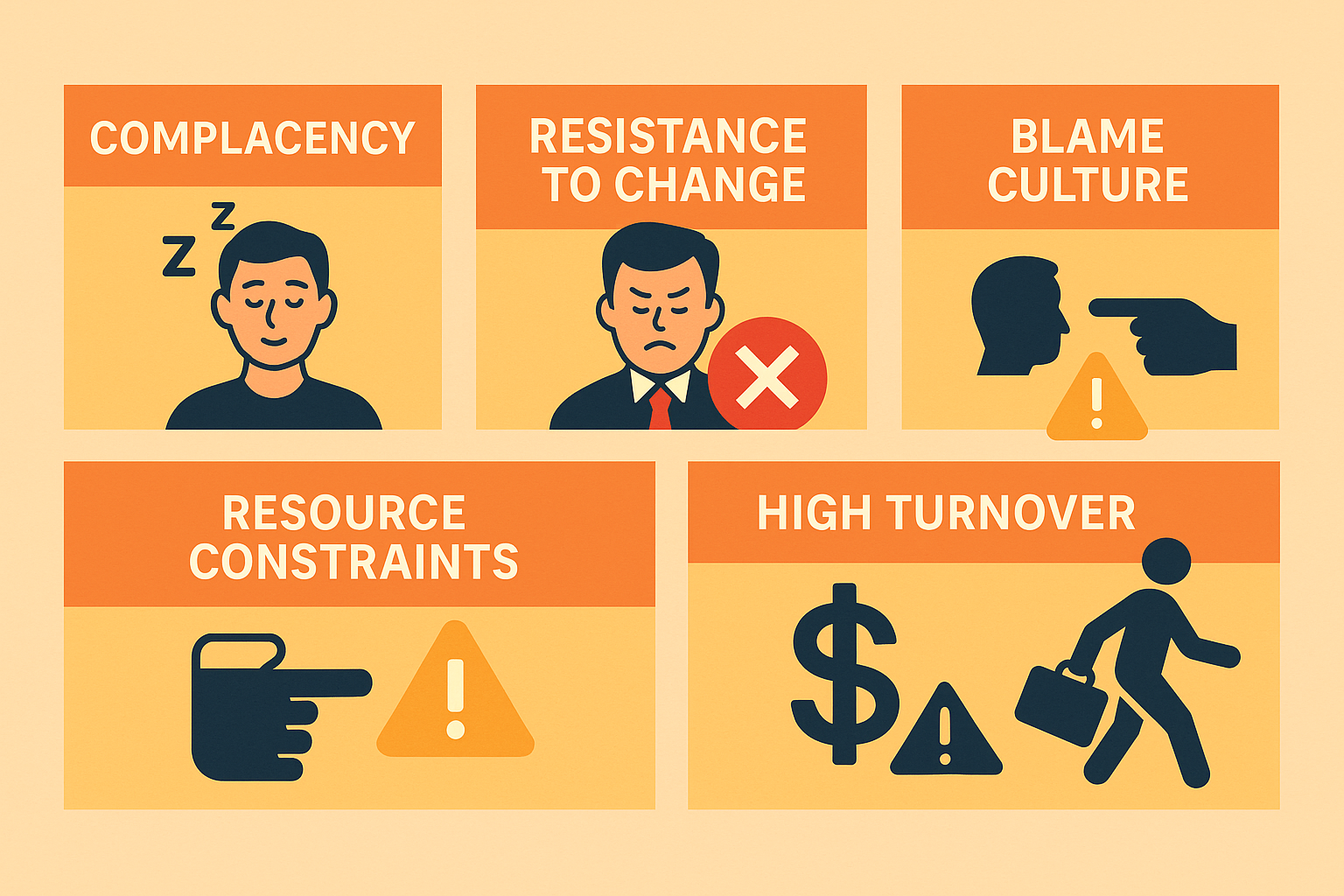
- Complacency: Assuming that low incident rates mean risks no longer exist.
- Resistance to change: Long-standing habits can be hard to shift.
- Blame culture: Workers may fear punishment for reporting incidents.
- Resource constraints: Smaller businesses may struggle to allocate funds for safety initiatives.
- High turnover: Industries with casual or transient workforces must constantly rebuild cultural momentum.
Overcoming these challenges requires persistence, communication, and a commitment to continuous improvement.
Case Study: Improving Safety in a National Logistics Company
A large logistics provider identified rising incident rates across its warehouses. While policies and procedures were in place, audits revealed gaps in worker engagement and reporting. The organisation implemented several measures:
- Conducting culture surveys to identify perceptions.
- Introducing peer-to-peer recognition for safe behaviours.
- Rolling out mobile reporting apps for real-time hazard identification.
- Providing refresher training on manual handling and vehicle safety.
- Encouraging senior managers to spend time on the warehouse floor weekly.
Within 18 months, near-miss reporting increased, incident rates declined, and employee engagement surveys showed significant cultural improvement.
Future of Safety Culture in Australia
Looking ahead, several trends are shaping how organisations will develop culture:
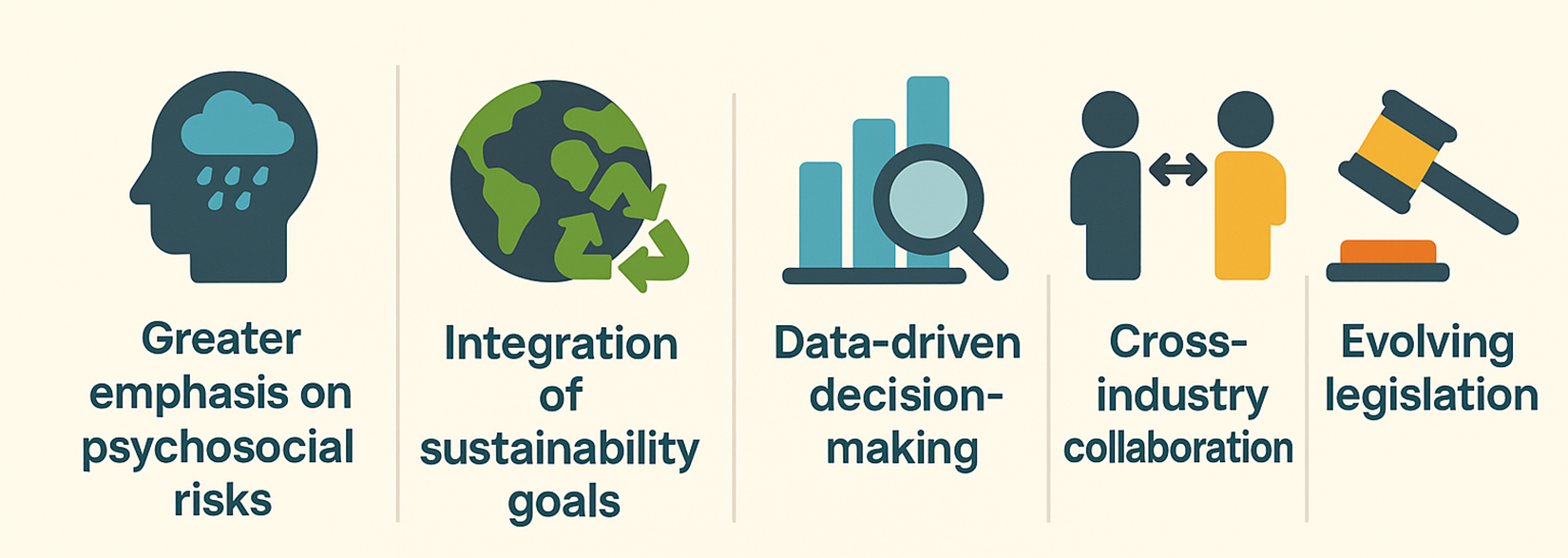
- Greater emphasis on psychosocial risks such as stress, fatigue, and workplace bullying.
- Integration of sustainability goals, where environmental and safety objectives align.
- Data-driven decision-making supported by predictive analytics.
- Cross-industry collaboration sharing lessons and innovations.
- Evolving legislation requiring more proactive management of risks.
By embracing these trends, organisations will continue strengthening their culture and ensuring long-term resilience.
Conclusion
Safety culture is the backbone of effective workplace health and safety. In Australia, where regulations are rigorous and industries diverse, it is vital for organisations to go beyond compliance and build a genuine commitment to safety.
By investing in leadership, engaging workers, embracing technology, and measuring progress, organisations can transform their approach to safety from reactive to proactive. This not only reduces incidents but also improves productivity, enhances reputation, and strengthens trust with stakeholders.
The organisations that thrive in the future will be those that can proudly demonstrate a strong, visible, and resilient safety culture Australia wide, where safety is not just a rule but a deeply embedded value.
Disclaimer
At SiteSherpa, we follow the Model Work Health and Safety (WHS) Act, along with other relevant legislation, regulations, and codes of practice applicable to Australia, to ensure our content reflects industry best practices. Our resources are designed to provide helpful guidance, but they don’t replace professional advice or legal requirements. We do our best to share accurate and reliable information, but businesses should always check their specific WHS obligations to stay compliant and keep their workplaces safe.
Related Content
Join Our Newsletter
Receive expert insights, safety updates, and the latest updates in our services and apps. Stay ahead of workplace safety, compliance, and operational efficiency delivered straight to your inbox.

.png)
.png)
.png)
.png)
.png)
.png)
.png)
.png)
.png)
.png)